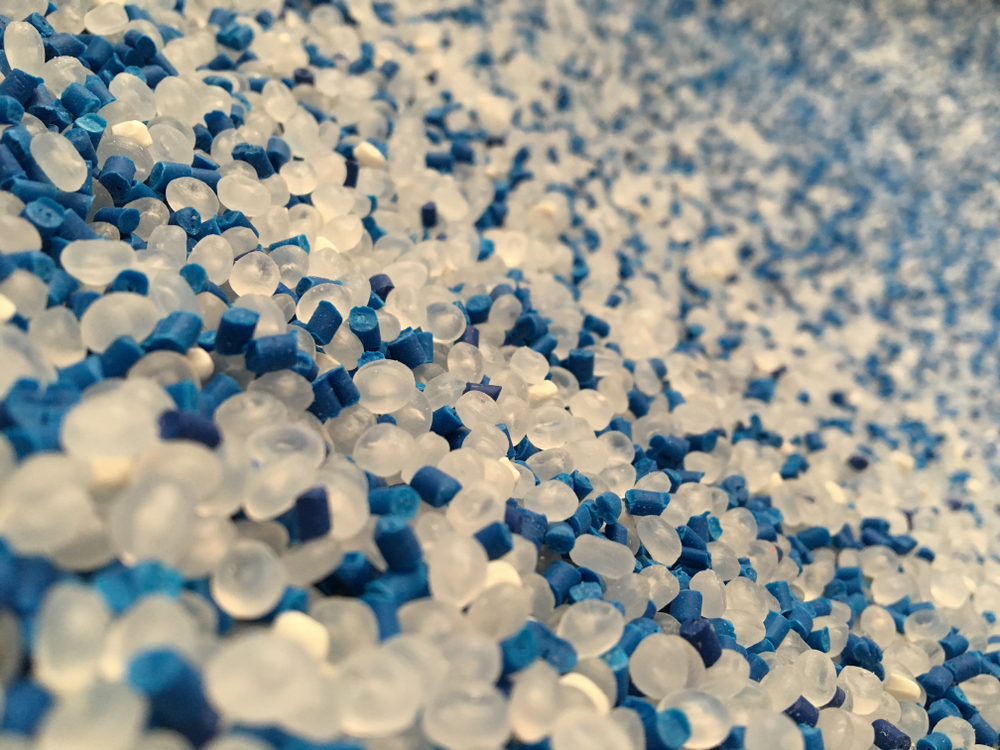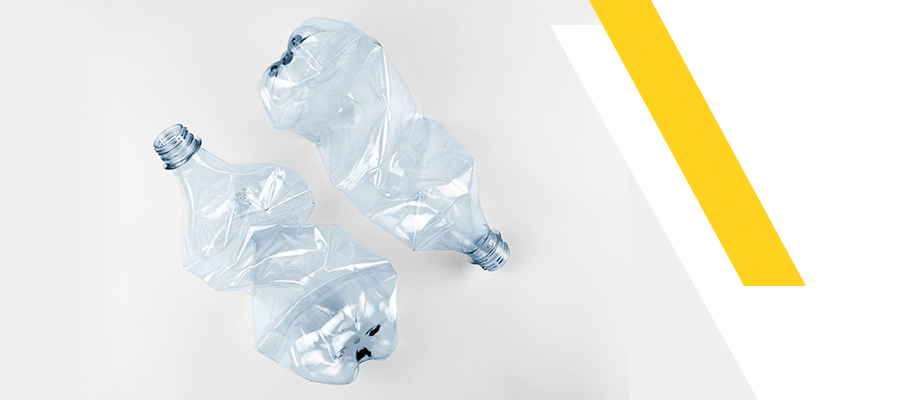
A Guide to The Most Common Plastic Bottle Defects

Holes, Tilted necks, or dim appearance? Whatever plastic bottle defects you are facing , “GAP Polymers” will help you cure them and ensure a quick and easy packaging manufacturing process.
In this article we will take you to a quick tour to know the types of plastic raw material that you can use to manufacture plastic bottles especially PET. We will also help you to prevent the following defects from interrupting you:
- Plastic paneling
- Cocked Necks
- Holes
- Short shots
- Leaks in the gate
- Dim Appearance
- Discoloration
- Brittleness
- The oval neck
Let’s go in deep to know which plastic raw materials you can depend on to manufacture bottles.
It’s enough for you to know that the bottles & containers market is expected to reach $224.97 billion by 2025 at a CAGR of 6.5% in the forecast period (2020-2025).
You can use several raw materials in bottle manufacturing such as HDPE (High Density Polyethylene), Polyethylene Terephthalate (PET), LDPE (Low Density Polyethylene) and PS (Polystyrene).
When it comes to the most suitable raw material for soft drink packaging. HDPE and PET are the best for this type of packaging.
1. PET (Polyethylene Terephthalate)
PET has unique properties. PET has high rigidity and hardness, and it has very low moisture absorption. It also characterized by good chemical resistance against acids
These perfect properties make it perfect for bottle manufacturing. The manufacturers consider it as Number one in recycling. PET recycling sends a positive signal to the plastic industry.
The global PET market is expected to reach $38,014 by 2023 at a CAGR of 6.9% from 2017 to 2023.
PET is used widely to manufacture water bottles, food containers and personal care products.
2. HDPE (High Density Polyethylene)
Here comes the HDPE turn, HDPE bottles are flexible beverage packaging. HDPE provides UV protection and a vapor barrier which makes it perfect for milk and dairy bottle manufacturing.
HDPE is lightweight, safe, durable, and versatile. HDPE containers are also recyclable and used in cleaning bottles, shampoo bottles.
According to STATISTA, global HDPE production is projected to reach 53.62 million metric tons by 2025.
Now it’s time to talk about remaining material, LDPE & PS:
3. LDPE (Low Density Polyethylene)
LDPE is the perfect material to manufacture plastic bottles despite its low tensile strength. It is very flexible and can be suitable for squeezable bottles. It is also durable and more malleable than HDPE.
The global LDPE market is expected to reach $69.5 billion in 2026 at a CAGR of 10.5% at the forecast period (2022-2026).
4. PS (Polystyrene)
Polystyrene is known for its rigidity and clear appearance. It is also considered an economic alternative to other plastic raw materials.
PS is perfect to manufacture plastic pharmaceutical bottles and screw bottles.
Why PET is the best raw material for bottles & why its bottles are the best?
PET Bottles are the popular choice for bottles manufactured as we mentioned it is perfect for soft drinks packaging. Here are the reasons that make PET bottles command this great popularity:
- PET bottles are recyclable so they can be used more than once.
- They offer a high level of efficiency as manufacturers can switch easily to other shapes or designs.
- They require less energy to transport
- They are cost effective to produce and perfect for multi-serve packs.
- They are mostly safe as they do not cause hazards when damaged or broken.
What are the most common bottle manufacturing defects & how can you prevent them?
Do you know that bottle manufacturing defects can affect your relationship with your clients?
That’s why quality departments concentrate on preventing different types of defects that can happen during the production process.
If you want to save money and costs for your company, take a look at GAP Polymers comprehensive guide:
- Plastic paneling
Plastic paneling happens when the ambient air pressure outside the bottle is more than the pressure inside the bottle. That causes a collapse in the bottle wall.
Once you know the reason, then you can fix it easily. Here are the solutions:
- Before sealing the bottle, allow the hot filled it to cool.
- Increasing the fill level to reduce the headspace in the bottles.
- ensuring that the bottle is of the proper gram weight and the right wall thickness.
- If the problem is related to oxygen absorption, we advise you to remove ingredients that contain Oxygen.
- Choked Necks

This problem occurs when one side of the bottle cools before the other side. The container design is another reason for this problem as the container with the offset neck the material will have more structure. The last reason is that the PET perform is being put improperly into the mold.
To solve this problem, you must check the design of the plastic bottle to know which type of container defect you can fix.
- Holes

You have to determine the root of this problem to fix it. Maybe the reason is the improper setup of the mold. It happens when the two halves of the mold close improperly. That causes holes as the plastic blows out of the mold.
In some cases, the reason is the wrong distribution of the material. It causes stretching for the thin areas of the material.
Holes can occur in any stage of the blow molding process, so the quality department should determine the cause in every stage.
- The short shots
It is a defect that happens in the injection blow molding process when you form the preform finish. When the plastic flows to form the precise finish, it flows to the end of the cavity mold. If it doesn’t fully flow, it causes short shots.
The effective solution for this problem is using a harder durometer that seals on the probe. By this step you can reduce the pressure of the probe.
- Leaks in the gates
Gate leaks are a specific type of hole that happens during the blow molding process. The wrong steps of the blow molding process have steps that may cause thin areas in the performance gate. This problem will also happen while heating the preform improperly during the blow mold step.
You can solve this easily by drawing more air out of the bottle through the leak, this test will help you identify the smaller holes.
There is another solution which is applying full vacuum to the gate area.
- Dim Appearance

Sometimes the bottle's appearance looks odd. The reason is that the bottle outer surface becomes cloudy which reduces the bottle mechanical strength.
Here are the several reasons for that problem:
- The appearance becomes cloudy when the cooling and temperature range goes beyond the specific level.
- The blowing of the bottle improperly also causes the dim appearance.
- This happens when the bottle is kept for a long time for stabilization because of the slow speed.
To overcome this defect, you have to decrease the heating temperatures by reducing the number of the lamps. This will reduce the whole temperature.
- Discoloration
This defect represents the burn marks that may appear. You can notice a darker shade nearest the gate area than the original color of the virgin plastic pallets. It also appears as dark streaks.
You can try many solutions to fix this, first try to decrease the pressure.
You can also decrease the melting temperature or the nozzle temperature.
Try also to move the mold to another smaller shot-size press.
Purging the heating cylinder may be a good solution too.
- Brittleness
This condition happens when the plastic part breaks at a lower stress level than the expected level based on the virgin material properties.
If you want to solve this, you have to try these two methods:
1- Check these variables:
- The amount of regrind use.
- The back pressure
- Screw speed
- Injection pressure
2- Increasing the melting temperature.
- The Oval Necks

The oval necks happen sometimes during the extrusion blow molding operations. The reason is insufficient mold cooling.
You can fix this by enhancing the waterflow and checking if the warpage is eliminated.
If the melt temperature is high, it causes this warpage of this part. You have to normalize the melt temperature and check if this will help you, but you must be careful as this may cause new defects like cold spots.